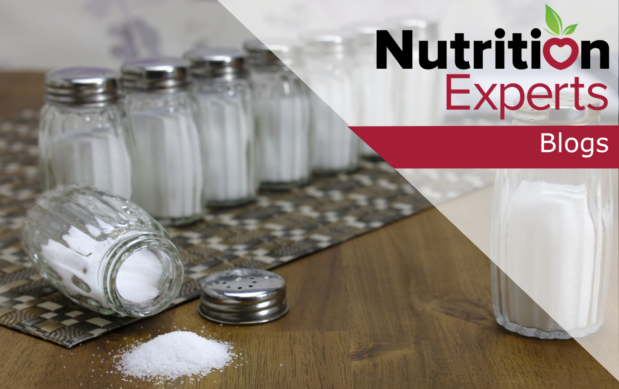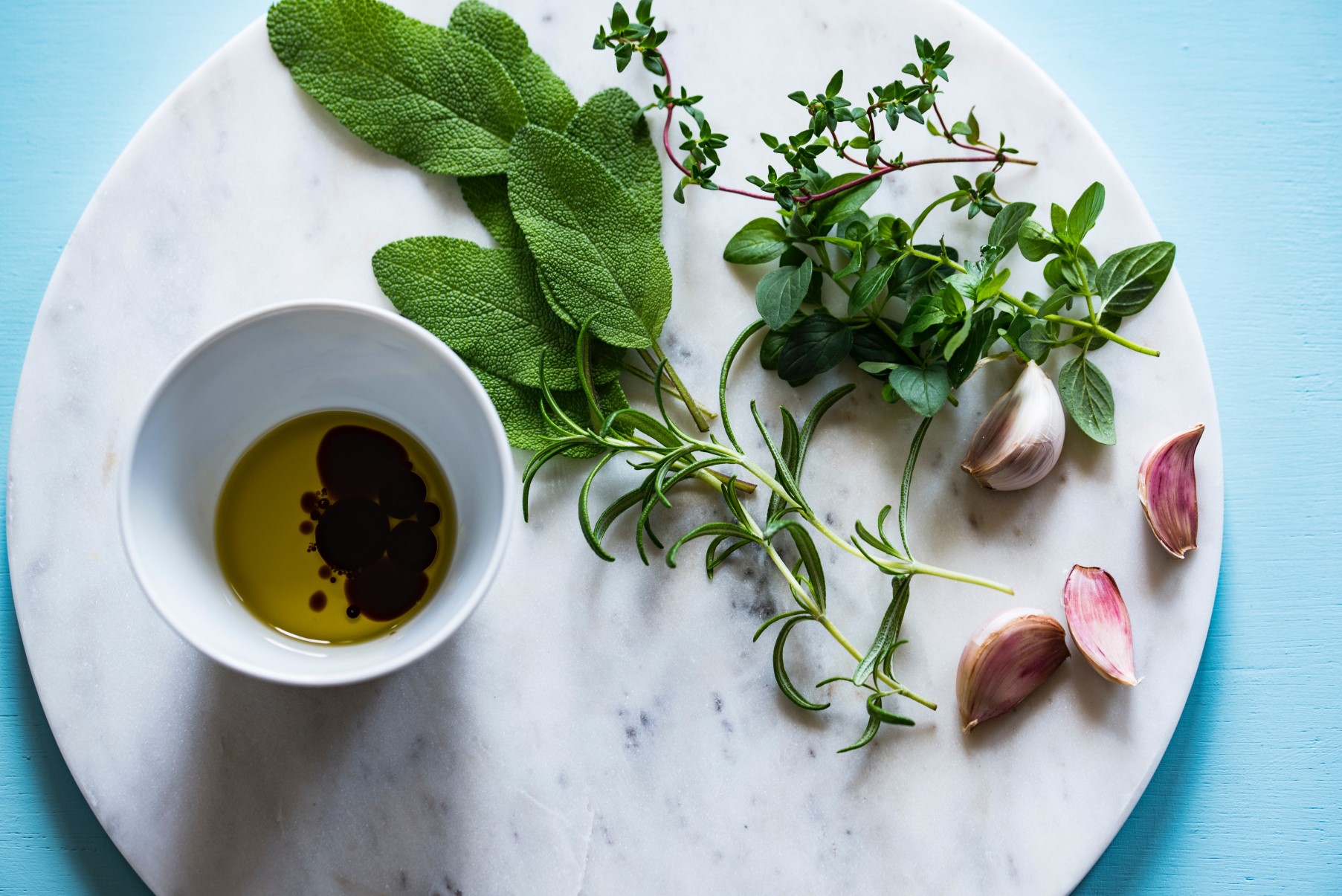
Image: Bru-nO/Pixabay
By Laura Ann Horwitz, CSUN DPD* Student
This article in the series on Sodium, will discuss health issues relating to sodium, and explain some of the jargon you see written about it.
So, what’s the buzz about eating sodium? Why should you care about how much sodium is in the food you eat?
Although sodium is an essential mineral needed for our body to function properly, eating foods with high levels of sodium have been linked to numerous health concerns including high blood pressure, heart disease, stroke, osteoporosis and stomach cancer.1 All of these issues impact and cause a burden to the economy of the United States, as well as to the framework of our current healthcare. Researchers have determined that reductions in our daily consumption of sodium could decrease both the number of illnesses among Americans related to sodium consumption, and the amount of money the U.S. could save in health care expenses.2
Why do we need sodium?
Our body needs sodium to enable muscle flexibility, help stimulate our nerves, help carry glucose (which provides energy) to our cells and help regulate the pressure of blood flow throughout the body.3,4
Two disorders can happen with deficient or excessive sodium levels in the blood: Hyponatremia (low levels of sodium) and Hypernatremia (high levels of sodium). Hyponatremia can occur from fluid overload or excessive sweating. This can result in insufficient growth, weight loss, anorexia, nausea, confusion, coma and sometimes death. Typically, hyponatremia is unrelated to not eating enough sodium in your diet. The opposite condition, Hypernatremia, can result in raised blood pressure levels, expelled or leached calcium from the bones, heart failure and water retention.3
Additionally, sodium has been used as a food ingredient in baking and cooking. It acts as a preservative, a flavor enhancer and a food additive. It helps cure meat, as well as thicken and retain moisture during food preparation. When reading the ingredient list on a Nutrition Facts label, you may come across items such as monosodium glutamate (MSG), sodium nitrite, sodium bicarbonate (baking soda) or sodium benzoate, which are all considered sodium when tallying the contents on the label.5
If your body needs sodium, why should you cut back on how much of it you eat?
On average, nearly 90% of people in the United States aged 2 or older, consume greater than 3,400 mg of sodium on a daily basis.6 Most people get enough sodium daily from within their diet, which is why there is not a specific recommended daily allowance (RDA) for intake; but there are recommended limits on how much sodium should be consumed per day. The Tolerable Upper Intake Level (UL) suggested for adults is 2,300 mg of sodium per day, which is the equivalent of about one teaspoon.3 The 2015-2020 Dietary Guidelines for Americans state that healthy eating patterns utilize a sodium limitation below 2,300 mg per day.7,8 By reducing how much sodium you eat every day, you can undergo improvement to your health, especially if you are experiencing high blood pressure.8
What is the difference between sodium and salt?
These terms, while often erroneously interchanged, are not the same. Sodium is a mineral found on the Periodical Table of Chemical Elements and is one of the chemicals present in salt.5 Salt is really a combination of sodium and chloride, another chemical element from the periodic table, and is often referred to as sodium chloride.6,8 Both sodium and chloride are important in maintaining balance between electrolytes and water.4 The combination is plentiful throughout our environment. Broken down, table salt has about 60% chloride and 40% sodium.1,9
To give you a better understanding of amounts, let’s look at these equivalents1:
575 mg sodium in ¼ teaspoon of table salt
1,150 mg sodium in ½ teaspoon of table salt
1,725 mg sodium in ¾ teaspoon of table salt
2,300 mg sodium in 1 full teaspoon of table salt
To give you a better understanding of packaging terminology (when looking at food labels), here is a quick guide to specified amounts of sodium/salt4,5,9:
| No Salt Added or Unsalted | During processing, no salt is added. However, the product itself may not be completely sodium free. |
| Light | This term is used if the product has less than half (or 50%) sodium than the regular/original version (per serving size). |
| Reduced | A minimum of 25% less sodium than the regular/original version (per serving size). |
| Low | The product must have 140 mg of sodium (or less) than the regular/original version (per serving size). |
| Very Low | The product must have 35 mg of sodium (or less) than the regular/original version (per serving size). |
| Sodium Free or Salt-Free | The product must have 5 mg of sodium (or less) than the regular/original version (per serving size). |
Who is at risk for health problems related to sodium consumption?
Anyone who is 50 years of age or older, of African American heritage, has chronic renal (kidney) problems or diabetes, and/or have been diagnosed with slightly elevated blood pressure or hypertension.10 Children and people who are salt sensitive are also susceptible to high intakes of sodium.1
What can you do?
People in the above categories should limit their sodium intake to 1,500 mg per day.11 Phyllis Balch writes in her book “Prescription for Nutritional Healing” that an essential method to lower blood pressure and alleviate corresponding health problems is to remove any added salt from your diet and follow a heart healthy lifestyle.12 She recommends the DASH diet (Dietary Approaches to Stop Hypertension), which was developed to help lower blood pressure and was one of the first studies linking blood pressure to what people eat.10,12 DASH utilizes a diet low in fat and dairy, high in fiber, fruits and vegetables, and limits sweets, red meat and saturated fats.10
The second article in the series on sodium, 10 Tips to Reduce Sodium When Eating on Campus, provides some great tips on reducing sodium which can be incorporated off-campus, dining in restaurants or eating at home. In our next article, we’ll explore more suggestions for reducing the salt in your daily diet.
Quick Tip
Store bought salad dressings can be high in sodium. A quick way to lower your sodium intake while still enjoying your favorite salad dressing is to “cut” or dilute the dressing with a blend of olive oil, vinegar, and lemon juice. Use 1 teaspoon of your favorite salad dressing, plus 1 teaspoon of olive oil + 1 teaspoon of vinegar + 1 teaspoon of lemon juice. Try this Spinach Broccoli Salad with your own favorite “cut” salad dressing. Store extra salad in the refrigerator undressed and add dressing when ready to eat, to preserve shelf life of salad.

Image: Joanna Kosinska/unsplash
Spinach Broccoli Salad
Recipe by Laura Ann Horwitz
Ingredients
Salad (serves 12)
• 8-10 oz. Spinach, fresh, chopped
• 7 cups Broccoli florets, fresh, chopped (approximately 2 heads broccoli)
• ¾ cup Almonds, dry toasted, unsalted, sliced or slivered
• ¼ cup Craisins, reduced sugar, 50% less sugar
• 1 cup Grapes, seedless, red, fresh, sliced
“Cut” Salad Dressing (1 serving)
• 1 teaspoon Sesame Garlic Salad Dressing or dressing of your choice
• 1 teaspoon Olive Oil
• 1 teaspoon Apple Cider Vinegar
• 1 teaspoon Lemon Juice
Directions
- In a large mixing bowl, break spinach leaves into smaller pieces; cut or break broccoli into small bite size pieces.
- Combine with craisins, nuts and grapes; add to spinach.
- Mix together ingredients for dressing using a small wire wisk or combine in small lidded mixing cup & shake well.
- Portion out serving of spinach broccoli mix and pour 1 serving of “cut” salad dressing on top.
Nutrition Facts
Spinach Broccoli Salad: (per serving)
Calories 90; Total Fat 4g; Saturated Fat 0g; Trans Fat 0g; Cholesterol 0mg; Sodium 25mg; Total Carbohydrate 15g; Dietary Fiber 3g; Total Sugars 7g; Protein 4g; Vitamin D 0mcg; Calcium 59mg; Iron 1mg; Potassium 240mg
“Cut” Salad Dressing (prior to adding 1 teaspoon of your favorite salad dressing)
1 Serving
Calories 40; Total Fat 4.5g; Saturated Fat 0.5g; Trans Fat 0g; Cholesterol 0mg; Sodium 0mg; Total Carbohydrate 0g; Dietary Fiber 0g; Total Sugars 0g; Protein 0g; Vitamin D 0mcg; Calcium 0mg; Iron 0mg; Potassium 9mg
*DPD = Didactic Program in Dietetics
References
1. American Heart Association/American Stroke Association (AHA/ASA). About sodium: sodium and your health. (AHA/ASA). https://sodiumbreakup.heart.org/sodium_and_your_health. 2018. Accessed July 10, 2018.
2. Harvard T.H. Chan. School of Public Health (HSPH). The Nutrition Source: Public health concerns: Salt and sodium. (HSPH). https://www.hsph.harvard.edu/nutritionsource/salt-and-sodium/sodium-public-health-concerns/ 2018. Accessed July 23, 2018.
3. Escott-Stump, S. Nutrition and Diagnosis-Related Care. 8th ed. Philadelphia: Wolters Kluwer; 2015:956.
4. Gropper SS, Smith JL. Advanced Nutrition and Human Metabolism. 6th ed. Belmont, CA: Wadsworth Cengage Learning; 2013:463.
5. U. S. Department of Health and Human Services. U. S. Food and Drug Administration (FDA). Use the Nutrition Facts Label to Reduce Your Intake of Sodium in Your Diet. FDA. https://www.fda.gov/Food/ResourcesForYou/Consumers/ucm315393.htm. Published June 12, 2018. Accessed June 12, 2018.
6. Centers for Disease Control and Prevention (CDC). Sodium: the facts. CDC https://www.cdc.gov/salt/pdfs/Sodium_Fact_Sheet.pdf. Published October 2017. Accessed July 11, 2018.
7. Department of Health and Human Services (DHHS). USDA Publication. Dietary Guidelines for Americans 2015-2020. 8th ed. DHHS. https://health.gov/dietaryguidelines/2015/resources/2015-2020_Dietary_Guidelines.pdf. December 2015. Accessed July 3, 2018.
8. Centers for Disease Control and Prevention (CDC). Sodium Fact Sheet. CDC. https://www.cdc.gov/dhdsp/data_statistics/fact_sheets/fs_sodium.htm. Published January 18, 2018. Accessed July 17, 2018.
9. Mahan LK, Raymond JL. Krause’s Food & the Nutrition Care Process. 14th ed. St. Louis, MO: Elsevier; 2017:1037.
10. Harvard T.H. Chan. School of Public Health (HSPH). The Nutrition Source: Health risks and disease related to salt and sodium. (HSPH). https://www.hsph.harvard.edu/nutritionsource/salt-and-sodium/sodium-health-risks-and-disease/ 2018. Accessed July 9, 2018.
11. Centers for Disease Control and Prevention (CDC). Vital Signs: Where’s the sodium? CDC. https://www.cdc.gov/VitalSigns/Sodium/?s_cid=bb-vitalsigns-113. Published February 2, 2012. Accessed July 11, 2018.
12. Balch, PA. Prescription for nutritional healing. 5th ed. New York, NY: Avery/Penguin Group; 2010:503.

Pingback: How Sodium Relates to Making Healthy Lifestyle Changes | Magaram Center Nutrition Experts Blog